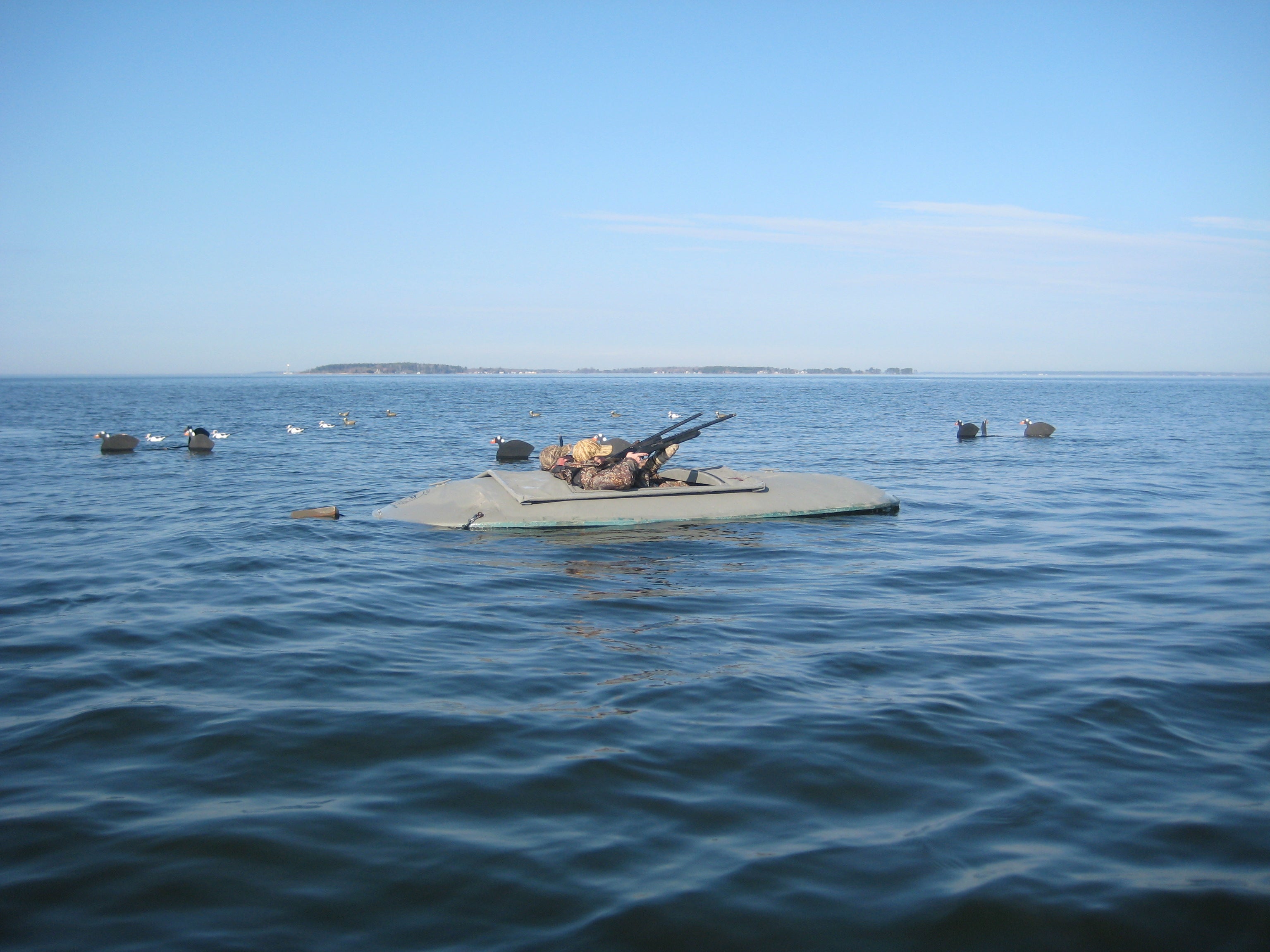Chesapeake Sea Duck Slam
Bob McNally 12.17.15

We heard the old squaws long before we saw them, as they emit a haunting, multi-note melodic call sounding like an out-of-tune Model-T Ford ahooga horn.
When they showed, six of them were flying just above Chesapeake Bay, wind at their tails, moving in tight formation like black-and-white feathered darts–complete with racy-looking pintails.
They came in quartering from behind, cut across the far side of our decoy spread, and were in range for just fleeting seconds. My son Matt and I sat up as best we could in the heavy clothes we wore against a frigid dawn, and cut loose four 12-gauge rounds, but no bird tumbled.
It was the fourth volley we sent toward open-water sea ducks in just 20 minutes of hunting, and we had yet to roll a bird.
Bring a lot of shells for sea duck hunting on Chesapeake Bay, especially when gunning from an ultra-low profile layout boat.
We’d arrived on the big bay at Baltimore’s doorstep right after record-setting snow and cold weather had slammed the region. Solid ice still clogged marinas throughout the Bay, but Baltimore friend Wayne Radcliff with Avery Outdoors is rigged for waterfowling in such weather. He and T.J. Sanner said sea ducks were thick on the bay, and he had a small 12-foot layout boat just right for hunting them.
This is specialized waterfowling, working for comparatively rare and unusual sea ducks–birds most of the nation’s duck hunters rarely see and for that reason hold in high esteem.
In the gray of dawn, we launched Wayne’s wide and seaworthy 23-foot fishing boat, with decoys and lightweight layout boat strapped in the bow. A 30-minute frigid run across the bay put us where sea ducks were rafting by the hundreds. In no time we had unique 3-way floating silhouette decoys scattered about in a likely spread, and the layout boat anchored upwind.
Matt and I climbed in the little boat, which looked tippy and dangerous, but is not–at least in mild seas. The boat is painted dull gray for water camouflage and is shaped a bit like an old-style baby moon car hubcap. It seems about the same size as a hubcap when hunters first climb aboard. In the center of the boat is a small square open area where shooters sit side-by-side. There’s a tilted backrest, and gunners lay down on their backs, their feet tucked forward under a bow cover.
Laying low (thus the name “layout”) is the ticket to lure ducks close, but makes shooting a very sporty proposition.
To shoot, a hunter must rise and turn, which is difficult enough. But when wearing chest-high waders and heavy clothing to ward off freezing temperatures, well missing ducks is easier than hitting them.
But there are so many sea ducks on Chesapeake Bay in late winter that gunners get plenty of opportunities at fast-flying fowl. Most shots are long, 40 to 50 yards. But occasionally birds draw close, and in time we took our limits of four ducks apiece.
Trophy waterfowl, for sure–a Chesapeake sea duck “slam,” said Wayne.
In the bag were all three species of scoters: common, whitewing, and surf. They are uniquely beautiful, but it’s the old squaw that gets the best-dressed award, especially the drake. Its stark black-and-white coloring and long and pointed tail are remarkable, even among ducks that are among nature’s better coiffed critters.
Sea duck season in Maryland runs through January. Bird numbers are abundant; there’s lots of elbow room on the sprawling inland sea of Chesapeake Bay. Duck guides, accommodations, and restaurants abound.



